Miratech conducted an eye tracking study on a Google search page. The study brought to light new results that challenge some preconceptions about the rules of ranking.
Our methodology
The study was carried out in 2008 and 2009 with 24 participants (9 French, 7 Japanese and 8 Americans). It measured how users looked at a results page when searching for information via the Google search engine.
In our eye tracking lab, each participant was seated in front of a screen displaying the Google search engine in Internet Explorer, with the display resolution set to 1024×768. Their task: “Imagine that you want to buy a digital camera.”
The principal results
The Miratech study revealed some results already observed in previous studies on the Google search engine, and also introduced some new themes. In this newsletter we present:
- The Golden Triangle
- The scan path for Google search results
- Some paths for exploring the page
The Golden Triangle
Here is the Google Golden Triangle, discovered by the marketing agency Enquiro in 2005 (see the study). This image shows the places most looked at on a Google search results page.
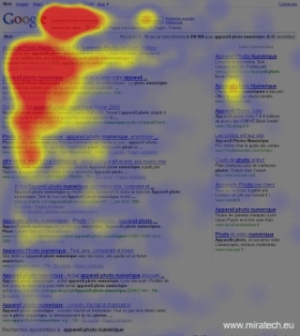
The Google Golden Triangle
For the purposes of the study, the page was divided into 3 areas of interest:
- The top of the page, which contains the search field
- The central results area (which contain both the organic results and the commercial links from the top)
- The sponsored links on the right of the page
Note: the central “results” area contains both the organic results and the sponsored links from the top of the page. We plan to separate these in a future study.
By focusing on the eye activity for each area, the following pattern was established:
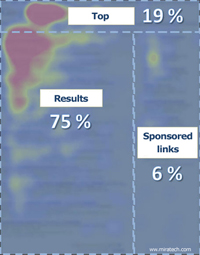
Breakdown of eye activity
- Not surprisingly, the central results area was the most looked at by far, with 75% of eye activity concentrated there.
- 19% of eye activity went to the top of the page. This is because the eyes travel back to the search field when typing in a new query.
- The sponsored links on the right drew 6% of eye activity and were seen by 1/3 of the users.
The scan path for Google search results
We measured the path taken to explore the page in seconds:
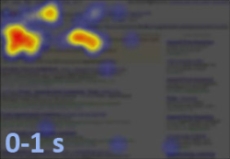
The eyes are still focused on the search field when the results are displayed. The eyes focus on the top of the page and on the first results.
![]()
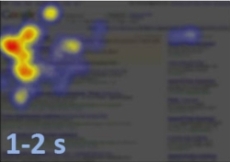
The user reads from left to right (“normal” direction) and looks at the first results in the central area.
![]()
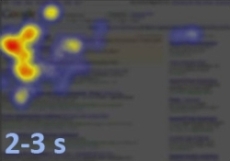
Eye activity then moves to the central results area and the sponsored links on the right. Some of the users are already moving back up to the search field to type in a new query.
![]()
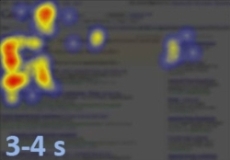
This behavior intensifies. Some users continue to look through the central results. Others go back to the search field.
![]()
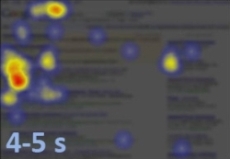
Eye activity moves to the results at the bottom of the screen.
![]()
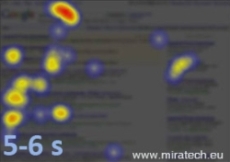
Most users enter a new query in the search field. Others explore the whole page.
To summarize, the first central results (organic results and sponsored links at the top) are read immediately.
Users modify their query within about 3 seconds on average.
The sponsored links on the right are looked at after 4 seconds on average.
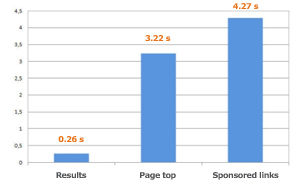
The average time before the first gaze (in seconds)
What part of the organic results do users read: the title or the URL?
Gaze plots show that each user reads the results differently. Users will focus on either the title or the URL, depending on their own habits and the circumstances.
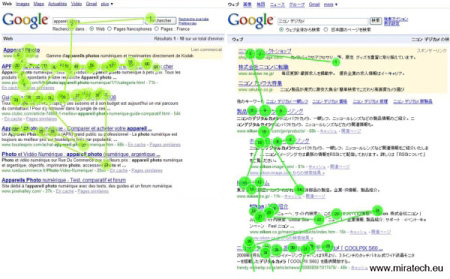
Examples of title reading

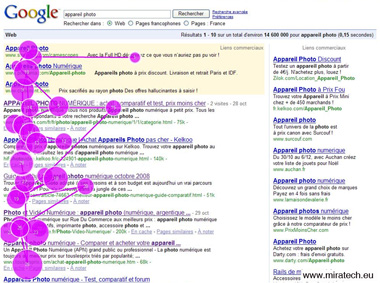
Example of URL reading
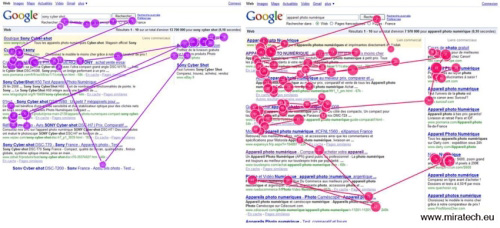
Examples of dispersed gaze plots
In our next newsletter, “Google ads in second position get more attention”, we will show you where to position your ads for maximum visibility.
